The Valencia based artist Stillonoir has carved out her own niche thanks to her intricate, high-contrast, hypnotic patterns
Arriving in Spain after growing up in Switzerland and studying in the States, Stillonoir – the nom de plume of Tanya Heidrich – combined her graphic design skills and concerns for social causes in a new setting that allowed her to share her artwork in public spaces.
Almost exclusively working in monochrome, Stillonoir patiently applies paint and ink with markers to produce repetitive forms, inspired by her natural surroundings, transformed into powerful textures.
As part of #mtnmarkermonth, MTN World talked to the artist about her unusual route to Valencia, the joy of working in black and white and supporting marginalized artists.
We understand you’d never painted a mural until you moved to Valencia. What was it about the city that encouraged you to start painting large format pieces in public?
I’d been wanting to try painting murals for some time before moving to Valencia, and so in many ways its vibrant street art scene was a big part of what attracted me to the city. Then once I got here, there’s so much public art everywhere that it really motivated me to just dive in!
Additionally, compared to more rural parts of Switzerland where I’m from, there’s a lot more about the culture at large here that feels open and keen on street art, like having more relaxed rules (on certain types of walls), and an overall population that’s more excited about having murals on their residential buildings, businesses and schools. I think things are moving in that direction in many parts of Switzerland too, but Spain is just further ahead!
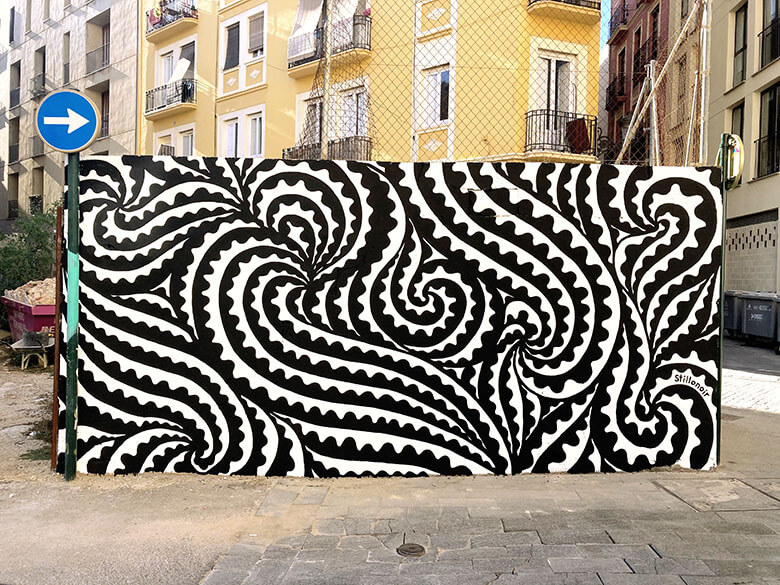
Valencia was named the number one city in the world for expats. What attracted you initially to live there? What keeps you living in the city?
I try not to use the word ‘expat’ because it implies a kind of hierarchy, and is often used as a way to separate European and North American immigrants from other immigrants. That being said, I did have the great fortune to get to choose where I wanted to live, which not everyone gets to do.
Prior to Valencia I lived in Baltimore, in the US, and I got so much out of this city that was often underestimated in favor of New York and Washington DC. I learned that I prefer to be away from the buzz of big metropolitan centers, and that there’s lots of interesting cultural, alternative things going on in other smaller cities that aren’t in the spotlight.
I knew since I was a teenager that I wanted to live in Spain at some point, and wasn’t too keen on living in Barcelona or Madrid, so after visiting a bunch of other cities Valencia felt like the perfect fit. I love the art in its streets, its food, its social, communal culture, and of course its parks and beaches. I moved here with the intention of sticking around, and so far I’m really happy with my decision!

‘Since my work is often a reflection of my surroundings, each place I’ve lived is featured heavily in my work, from the manhole covers of Baltimore, to the alpine flora and seasonal crops of Switzerland, to the tiles and coastal sand ripples of Valencia.’
Do you consider that you form part of an artistic community in Valencia? Who are your favorite local artists?
I got lucky and a few months into living here was invited to join a group of women artists, many of whom have become close friends. Before the pandemic we used to meet at least once a month to talk art, go see shows together, and offer support for our various projects. It’s been really meaningful to find that artistic community here, and they’ve all influenced and helped me improve my own practice!
There are so many great local artists that I can’t possibly name them all, but as far as street artists I really love the detailed, colorful work of Disneylexia, the political statements made by STOOL, and the messaging and graphic linework by Elías Taño. I also enjoy walking by the abstract works of Dafnetree, Nero and Una Mesa.
We were able to visit the city recently for the Abstracte festival which introduced a whole set of murals along the Turia park. Which are the other must-see streets or galleries for people visiting Valencia?
The fun in this city is that street art is sprinkled everywhere, so if you meander around a neighborhood you’ll always find something new. I’d especially recommend walking around Ciutat Vella (the old town), El Cabañal and Benimaclet. The CCCC is my favorite spot to see art indoors, and often features street artists in its exhibitions too.
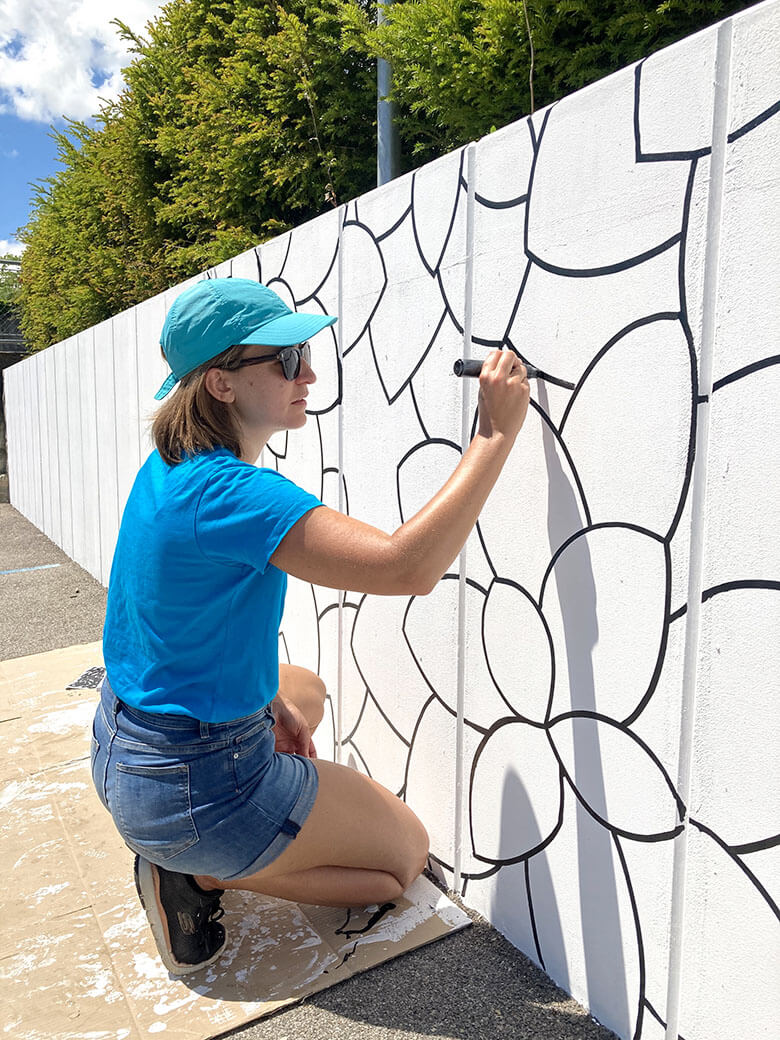
‘I like to work with black pens specifically because the pure contrast of black on white is the best way to convey the way I see the world – through lines, textures and details – without the distraction of tones and color.’
You’ve spent time living in Spain, the USA and your native Switzerland. How has each country influenced your work?
Since my work is often a reflection of my surroundings, each place I’ve lived is featured heavily in my work, from the manhole covers of Baltimore, to the alpine flora and seasonal crops of Switzerland, to the tiles and coastal sand ripples of Valencia.
Each country also represents a different time in my life, so the influence of each started on a personal level and overlapped into my work: In Switzerland, there’s a great appreciation for traditional fine arts and mediums, so I’m sure that influenced my love for working with a simple black pen.
In the US I studied graphic design and eventually went on to work as a graphic designer, where I learned how to think about creating through systems, consistency, and with others/accessibility in mind. I think this background in design continues to influence my fine art and illustration practice today, as I like to think a lot about how my work occupies a space, who will be interacting with it, and how to adapt it to its environment.
The other big way that the US – and Baltimore specifically – influenced me was in making me a lot more politically and socially engaged. Whereas a lot of my work isn’t necessarily directly political, my beliefs and values – for gender, racial and economic equity – play a big part in how I run my business, the people I work with, and how I try to influence others in the industry and behind the scenes.
As for Spain, I moved here at a pivotal moment in my creative career, soon after I’d decided to step away from graphic design and towards a more multidisciplinary, expressive art practice. Here I’ve met so many artists that truly make time to create, that put the pleasure of making their art above so much else, and that’s been a great influence on me after years of being stuck in a freelance grind of graphic design client work.
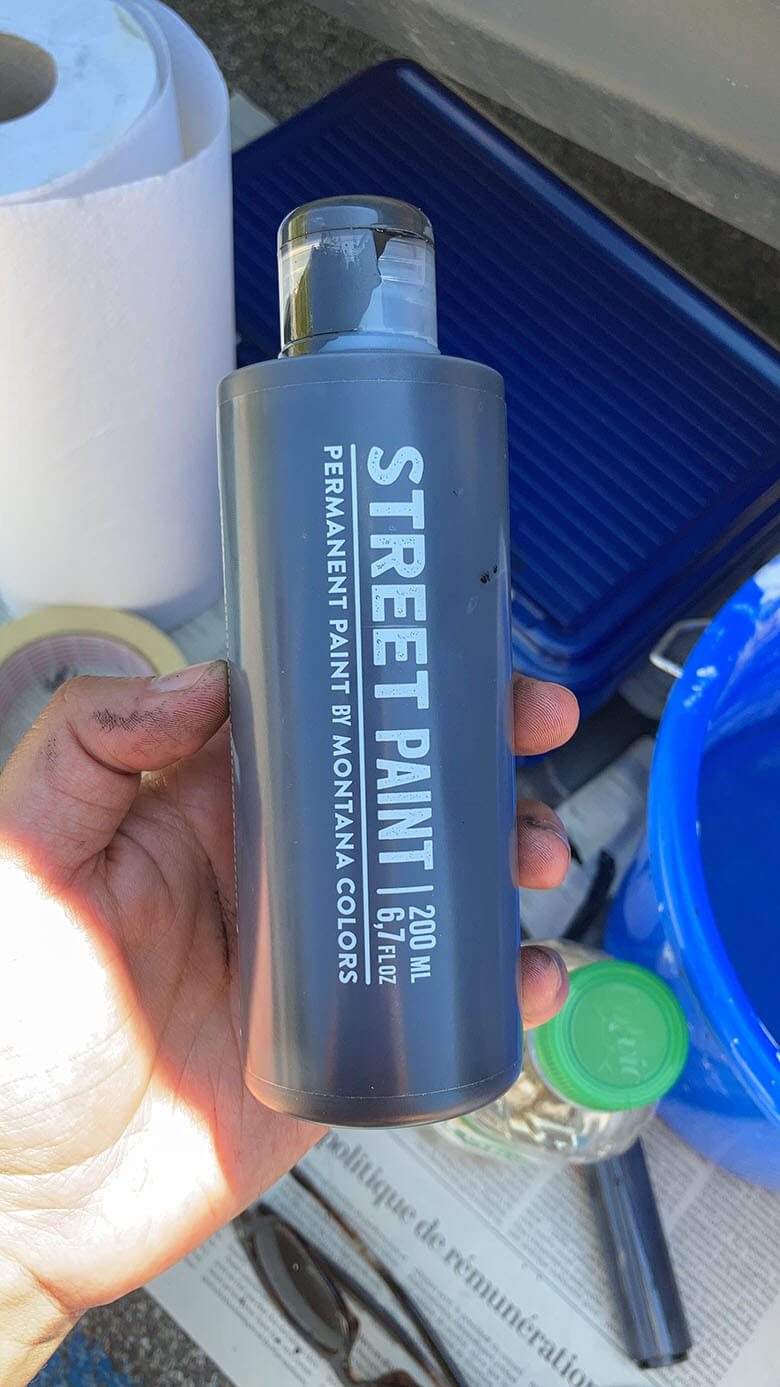
‘Anytime my messages get a little more political or opinionated there’ll be some disagreement, and at times I appreciate the feedback because it can open my eyes to something I hadn’t considered.’
You’re known for your affection for markers – your artistic name even refers to a black pen. What is it about markers that makes them the perfect tool for you?
I love the clean, dark strokes they create, and the challenge of working with something you can’t erase. I like to work with black pens specifically because the pure contrast of black on white is the best way to convey the way I see the world – through lines, textures and details – without the distraction of tones and color. I love seeing color in others’ work, but for some reason it usually doesn’t feel like the right fit for my own pieces.
What’s important in a good marker?
A tip whose shape holds for a long time, and long-lasting dark black ink!
Most of your work is abstract, but you’ve clearly got an interest in lettering too. Is it important to communicate a message in your pieces? Do you find people engage more with something they can read?
It depends! Using words and lettering isn’t the only way to convey a message, but it’s been something I’ve been playing around with. In my ongoing personal project ‘Pandemic Thoughts’, I felt that words were the right way to capture our unusual, collective new reality in a way that felt emotionally and intellectually accessible. And I think that ultimately accessibility is what is most likely to make people engage – whether that’s through words or any number of other methods and mediums.

Have you had any negative feedback as a response to your statements?
Yeah, I think that’s inevitable with sharing opinions online to a large audience. Anytime my messages get a little more political or opinionated there’ll be some disagreement, and at times I appreciate the feedback because it can open my eyes to something I hadn’t considered. But others times I can’t deny that it stings, though I think I still have it very easy compared to other artists out there who are far more political, and in particular those who aren’t white or cis.
You strayed from your monochromatic house style to produce a series of wallpapers produced to coincide with pride month. What was your motivation for starting this project?
I actually made those over the winter, but I think people started sharing them more during pride month!
I initially created the version with the bisexual flag colors for myself as a phone background, because I wanted something that signaled my queerness to myself and others. People often read me as straight, and I still have all kinds of imposter syndrome thoughts swirling in my head about my own identity, so I wanted to treat myself with something affirming.
After a few months of using it as my backdrop and positive feedback from friends, I decided to create a version for each of the queer flags for anyone to download and use. That way, others could have this little affirmation of their identity and validity too!
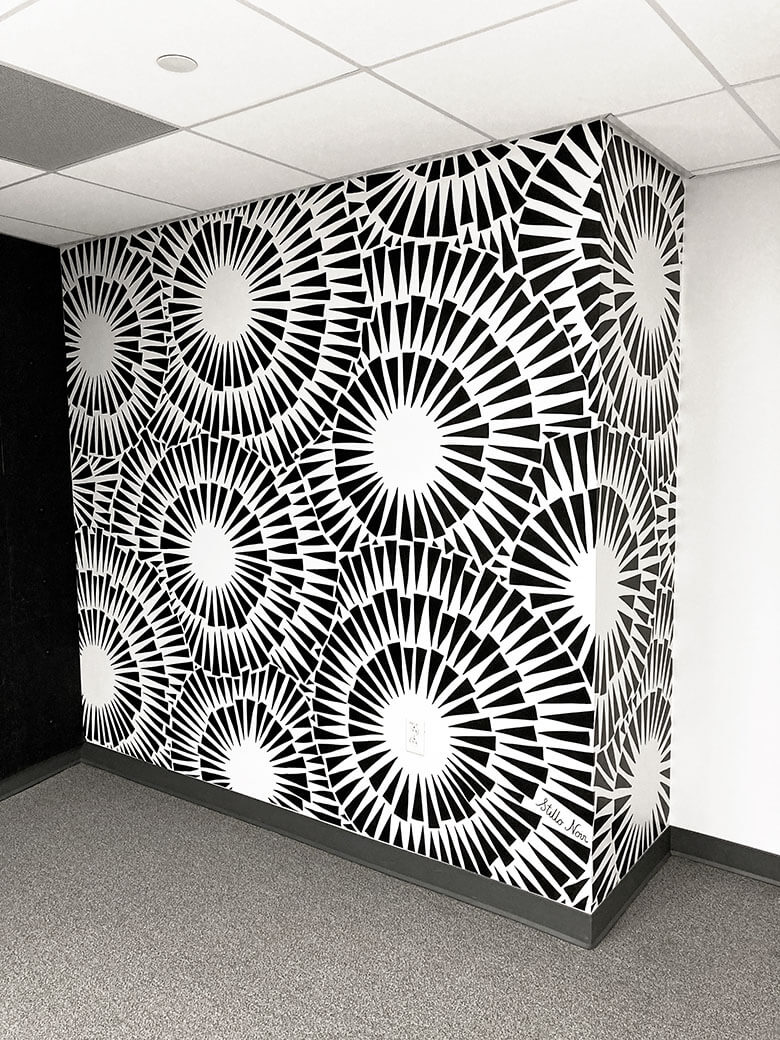
There have been a number of high-profile attacks on LGBT people in Spain over the past few months. How do you think that graffiti and street artists can contribute to educating our community and ultimately progressing as a society?
Some artists incorporate messages of allyship, education and support in their work, and that’s great! But not everyone’s work is necessarily political, and that’s alright, because in my opinion the most important work is the one we do within our own communities, and behind the scenes.
I can’t pretend to be an expert on graffiti or street art sub-cultures, especially as they vary from one country/city to the other, but from what I’ve seen a lot of the spaces are primarily hetero, cisgender and male. Even though there are certainly allies in those spaces, the environment can sometimes feel uncomfortable to people of other identities.
Like any other social space, progress can be made by educating folks, holding people accountable for their actions and words, supporting marginalized artists, and by being proactive in creating a welcoming and inclusive atmosphere. That way, people of different genders, sexual orientations, races and abilities can enter – and feel safe to stay in – those spaces.
I say ‘stay’, because when an environment feels hostile, or when you feel you’re the only one trying to advocate for change, it’s easier to burn out and opt out than when you have a community that is fighting alongside you.
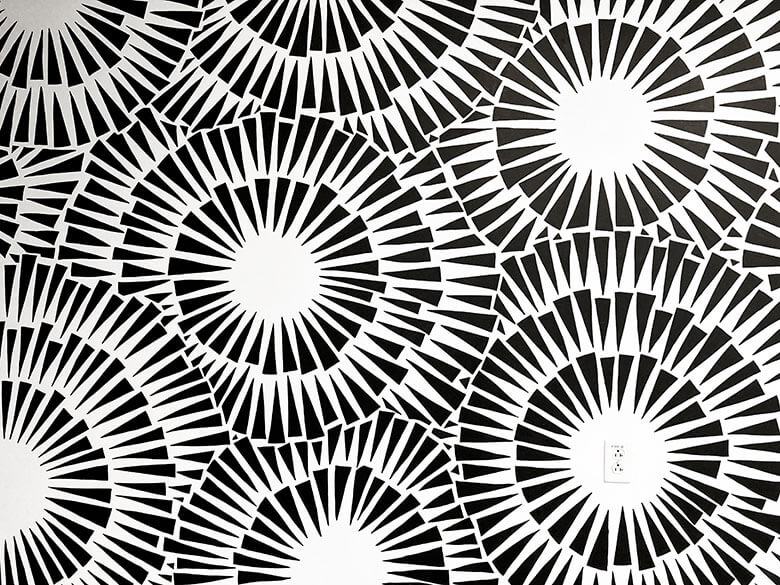
You’ve got a considerable following on Instagram, that must take a lot of time and attention. Is it a vital tool for your job? What downsides do you think there are?
I have such a complicated relationship with Instagram! On the one hand I’m grateful for all the opportunities it’s gotten me, which is to say most of the projects I’ve gotten to work on and most of the commissions I receive. But on the other it really is a time suck, and so terrible for our mental health, not only in how it drives us to compare ourselves to others and their projected success, but how it places metrics as the ultimate measure of the value of an artist’s work.
This past winter I had to take a break away from it, because I felt that the constant pressure to create and to stay relevant in the eyes of the algorithm was having too big an impact on the work I was making: rather than taking the time and space I needed to experiment, learn new skills and develop different ideas, I felt a pressure to recreate and pump out what already worked.
I’ve seen a lot of other artists talk about the struggle to balance the need for visibility in order to get new projects, and the need for breathing room and down time to create good work and grow as creatives. I still don’t have the perfect answer, but ever since coming back from that break I’ve been more selective about what I share on there, and it’s definitely helped.
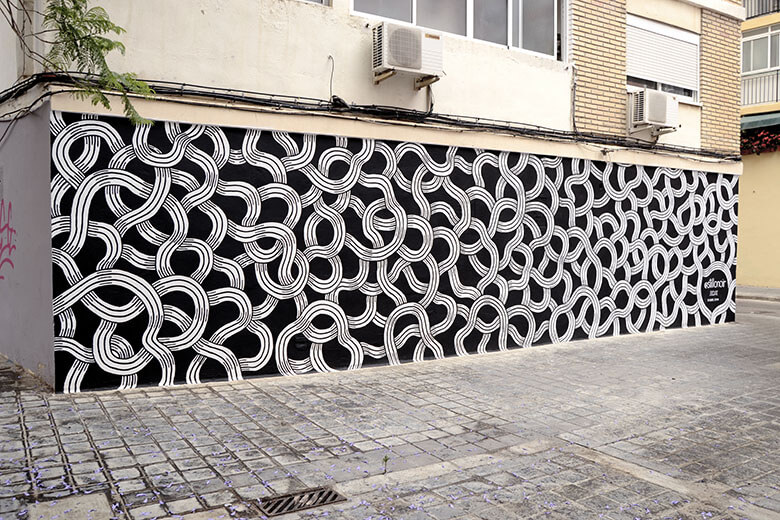
What do you listen to when you’re working? Any favourite mixes, playlists, podcasts or radio stations?
I always have something on in the background when I work, whether it’s music, a tv show or a podcast! I like having that background noise and distraction, it somehow helps me focus.
I listen to a lot of news podcasts, and once I’ve caught up on those for the day I’ll move onto cultural podcasts like Still Processing, The Cut, Extra Paint or The White Pube. As for TV series, I honestly watch an embarrassing amount: Anything from trashy reality TV, to comedies, to prestige dramas.
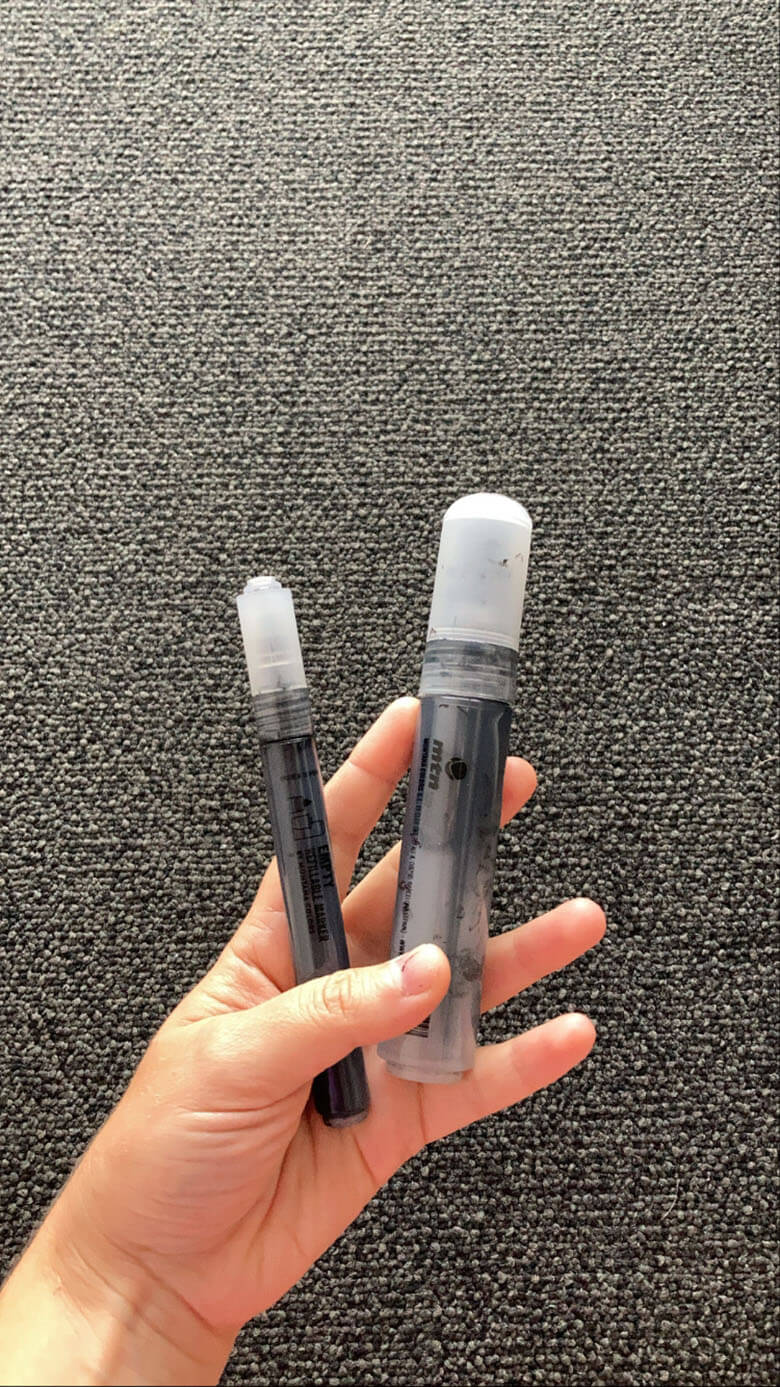
You can search for more marker content using the hashtag #mtnmarkermonth on social media.
Montana Colors is running a sale on all our markers, dabbers, ink and paint throughout September. Use the promotional code MARKER15 to unlock your discount today.
by admin via Montana World

Keine Kommentare:
Kommentar veröffentlichen